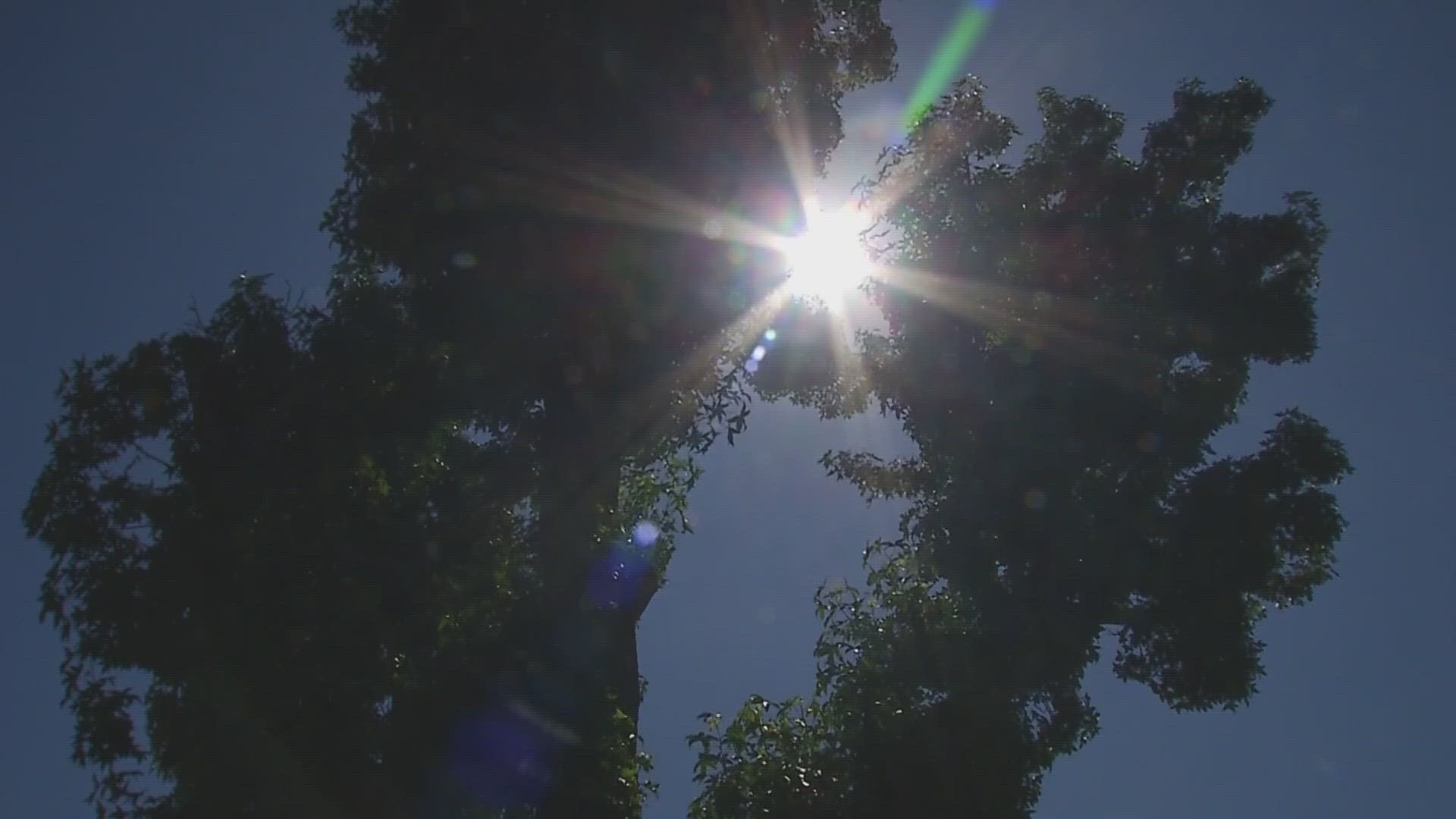COLUMBUS, Ohio — An Air Quality Alert that was in effect for some parts of central Ohio expired on Friday.
Franklin, Delaware, Licking and Fairfield counties were under the alert since Tuesday afternoon. The Mid-Ohio Regional Planning Commission extended the alert through Friday because the pollutant carryover from the week would keep Air Quality Index levels as unhealthy.
MORPC anticipated the AQI to be 102 on Friday. When AQI levels are more than 100, the air quality is considered to be unhealthy for sensitive groups.
As of Friday night, the AQI is 55 — which is listed as moderate air quality in the area.
The Ohio EPA on Friday canceled the statewide Air Quality Advisory because the smoke is now having less of an impact in the state.
Particulate levels may remain elevated in isolated areas heading into the Fourth of July weekend, resulting in some local or metropolitan planning agencies issuing advisories.
What is the Air Quality Index?
The Air Quality Index - or AQI - is the EPA's index for reporting on air quality. As the National Weather Service explains, it "tells you how clean or polluted your air is, and what associated health effects might be a concern for you." The EPA calculates the AQI for five major air pollutants: ground-level ozone, particle pollution, carbon monoxide, sulfur dioxide and nitrogen dioxide.
The main concern from the wildfire smoke is fine particle pollution, or PM2.5. These particles are tiny enough to get deep into the lungs. They can cause short-term problems like coughing and itchy eyes, and in the long run, can affect the lungs and heart.
What's the air quality near me?
You can check AirNow.gov, which updates every hour, for information on air quality. The site shows a real-time map of the air quality across the country and also includes a forecast for the day ahead. The map pulls in measurements from a network of air monitoring stations across the country. States and cities may also offer more local guidance.
What does hazardous air quality mean? What is a healthy air quality index?
The index runs from zero to 500. The higher the number, the worse the air quality. That range is broken down into six color-coded categories. Green or yellow — in the zero to 100 range — the air is pretty clear. Once it gets up to orange, the air quality could be a concern for sensitive groups like kids, older adults or those with health conditions.
In the red and purple zones, the air quality is considered unhealthy for everyone. And once it gets to maroon — at 301 or above — pollution levels are hazardous.
At these high levels, take precautions to avoid breathing in the dangerous air. That can mean reducing your outdoor activities, running air purifiers inside and wearing a well-fitting mask like an N95 when you’re outside.
What actions should you take?
On Air Quality Alert days, MORPC recommends taking action to improve air quality. The majority of particle pollution levels come from vehicle emissions and burning activity.
- Explore different commute options such as carpooling
- Turn off your engine instead of idling your vehicle to cut down on vehicle emissions.
- Avoid burning wood, leaves, and other materials on Alert days and learn more about best wood-burning practices.
- Avoid mowing your lawn or using other gas-powered lawn equipment on an Air Quality Alert Day. Longer grass in your yard is good for the air and water quality.

